DP Kit Fraser used Kodak 35mm to create colorful and compassionate storytelling for 'Eternal Beauty'
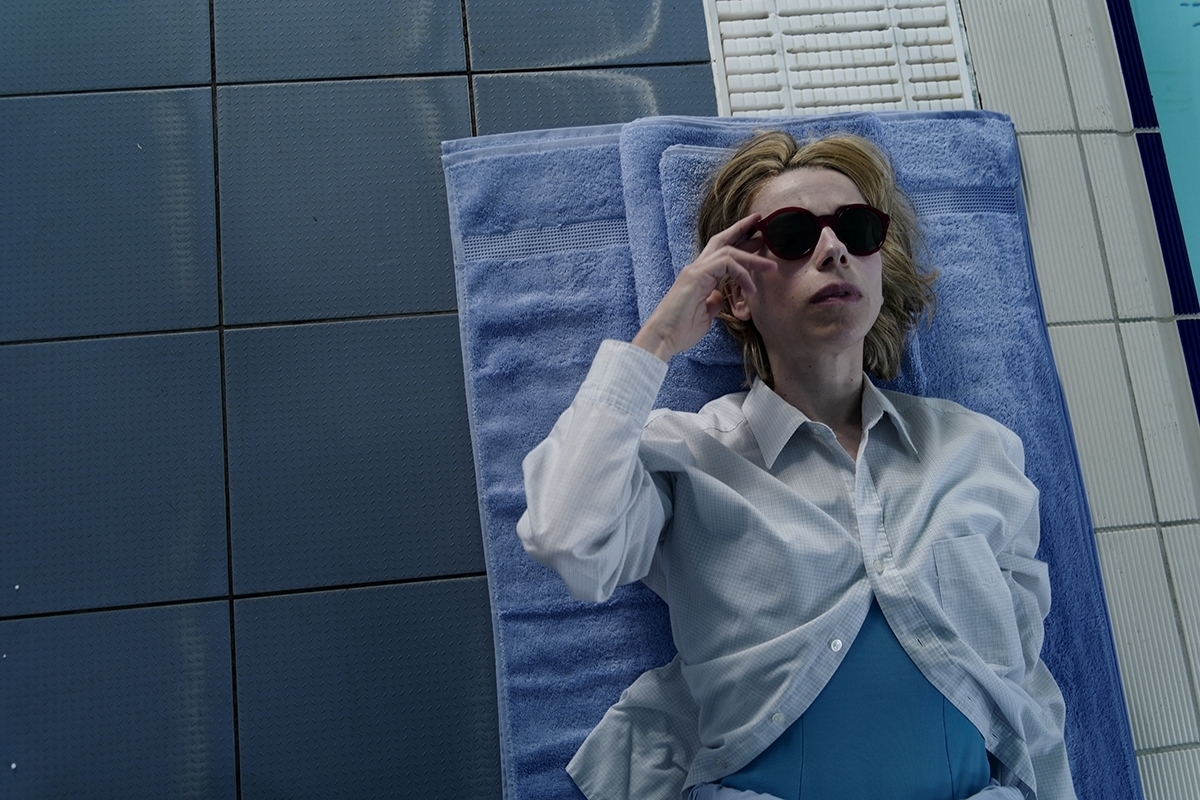
Sally Hawkins plays Judy, with David Thewlis as Mike, in director Craig Roberts’ 35mm film "Eternal Beauty." Cinematography by Kit Fraser.
Shot entirely using Kodak 35mm motion picture filmstocks, the bittersweet drama Eternal Beauty portrays the often-misunderstood issues surrounding mental health with dignity, humour and tenderness.
Aged just 17, June should have been on-track for small-town stature – happily engaged to her heartthrob boyfriend Johnny and on a promising path as a model on the horizon. But her world comes crashing down when she loses a coveted beauty pageant and discovers Johnny has been having a secret affair with her best friend.
The news causes June to suffer a schizophrenic breakdown, followed by years of hospitalization and intense therapy. Twenty years later, June is still waging a battle against her mental illness, receiving little support from her family. Her only solace comes from conversations with an unseen lover, who encourages her to skip her medication with predictably unpredictable consequences. Amid mounting unrest in her life June meets Mike, a failed musician and fellow lost soul, who is stumbling through life with bipolar disorder. What follows is a sensitive and darkly comic romance, as relationships collide with both moving and humorous consequences.
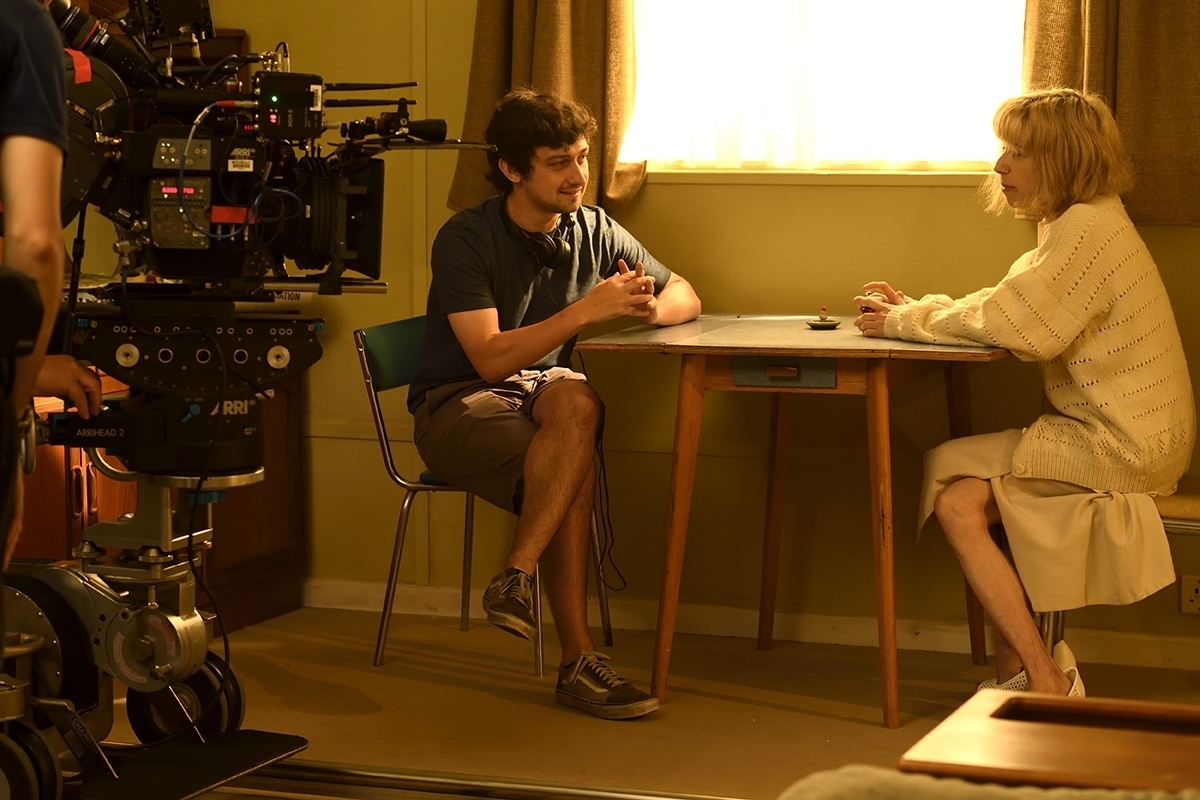
Director Craig Roberts with actress Sally Hawkins on the set of "Eternal Beauty." Photo by Alex Bailey.
The £3m film was written and directed by Craig Roberts, his second feature behind the camera following 2015’s BAFTA Wales Award-nominated film Just Jim. It was produced by Adrian Bate and exec-produced by Roberts through Cliff Edge Pictures, with financial support coming from the BFI (awarding funds from the UK National Lottery), Ffilm Cymru Wales and Wellcome. In April 2019 Eternal Beauty landed a major multi-territory deal with Sony Pictures Worldwide Acquisitions.
The film stars Sally Hawkins in her first lead role since her Oscar nomination for The Shape of Water, alongside Alice Lowe, David Thewlis, Billie Piper and Penelope Wilton.
Cinematography on Eternal Beauty took place under the supervision of DP Kit Fraser, who recently took audiences on a seriously dark and spooky journey with the horror flick Possum (2018), also shot on Kodak 35mm film. Eternal Beauty shot for 30 days, over a six-week period from May to July 2018, entirely in South Wales. Locations encompassed Cardiff, Newport and Port Talbot, along with sets of June’s flat, some enabling theatrical scene transitions, that were constructed at Dragon International Film Studios, also known as ‘Valleywood’, near Bridgend.
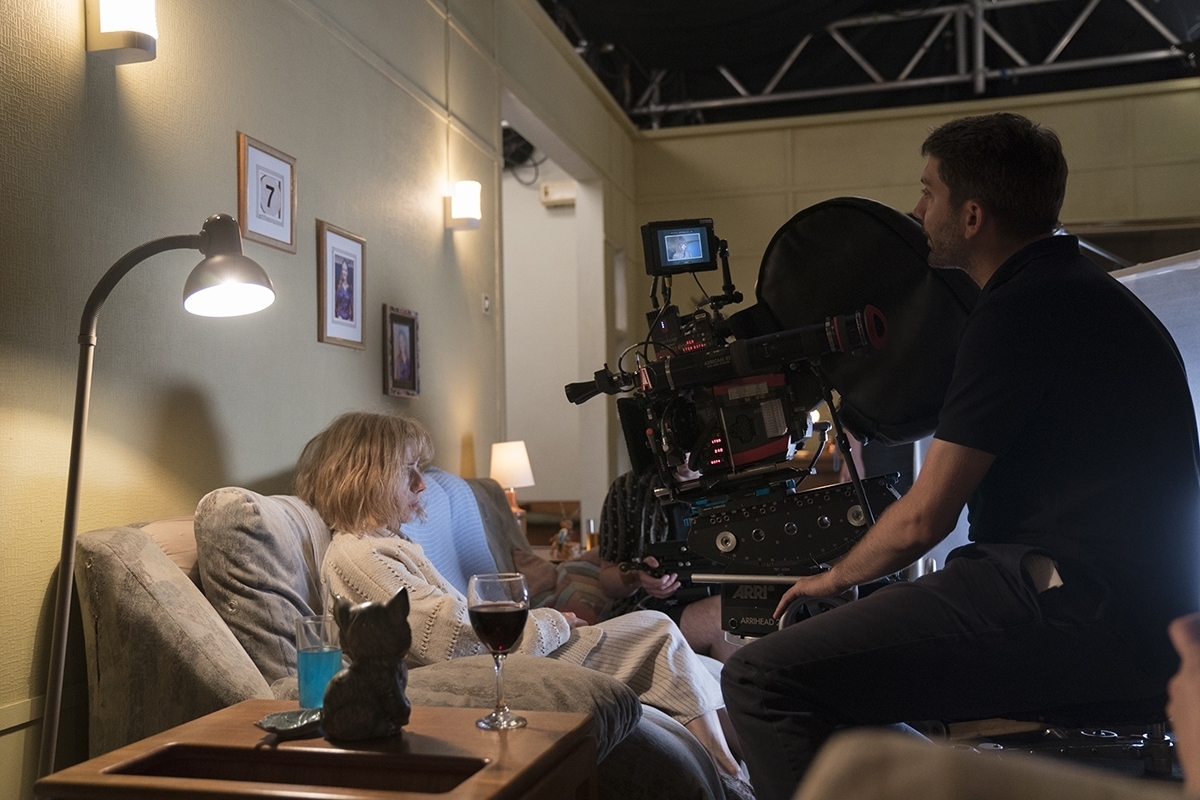
Cinematographer Kit Fraser operating the 35mm camera during a scene featuring Sally Hawkins in "Eternal Beauty," directed by Craig Roberts. Photo by Aimee Spinks.
“Mental health, and conditions such as of schizophrenia, are important social issues, and I was immediately affected by Craig’s touching script, in which tragedy and humour are entwined together,” says Fraser. “Along with the subject matter, Craig’s creative vision and the superb cast, the fact that the story was to be shot on 35mm proved another great attraction for me to want to get involved.
“During our initial discussions about the visual treatment for the film, Craig made it quite clear that whilst he wanted this production to feel like a film from an older period in time, he did not want to produce a grey, drab and depressing drama. Quite the opposite, he was keen for a really cinematic approach, with plenty of bold color through costume and lighting, and to get inside our protagonist’s head by incorporating stylized staging, organic camera movement and unusual points of view.”
A variety of motion pictures with strong visual signatures were amongst a plethora of inspirations that helped to inform Fraser’s cinematography. These included: Krzysztof Kieslowski’s Three Colors: Blue (1993, DP Slawomir Idziak PSC), Bernardo Bertolucci’s The Conformist (1970, DP Vittorio Storaro AIC ASC), Ingmar Bergman’s Persona (1966, DP Sven Nykvist) and Paul Thomas Anderson’s Punch-Drunk Love (2002, DP Robert Elswit ASC).
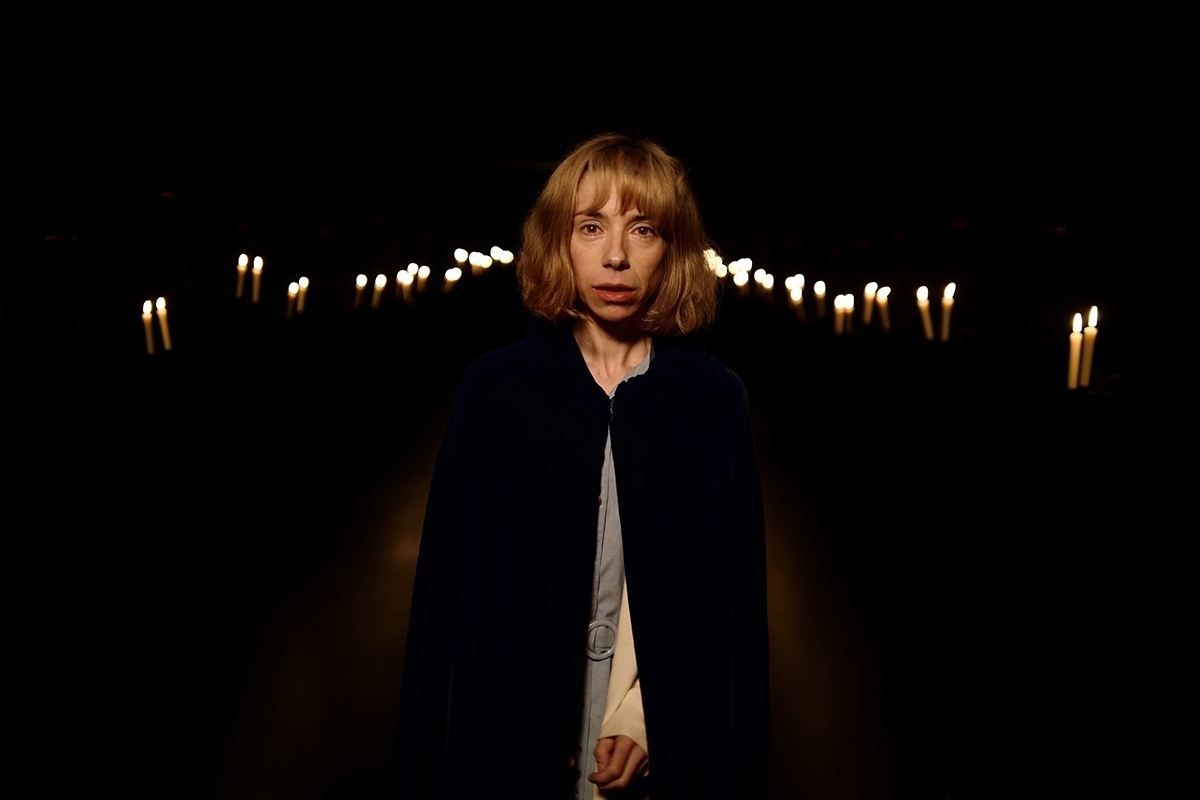
Sally Hawkins as Judy in director Craig Roberts’ 35mm film "Eternal Beauty." Cinematography by Kit Fraser.
“We had loads of different movie references, but all with common threads of them each having strong, colorful stylized looks, and all being shot on celluloid film,” Fraser remarks. “Craig loves film, and is a big advocate for celluloid production. Me too. If I could keep on just shooting film, I would love that! For me, film means I can bake-in the picture I want, straight on to the negative in the camera, as opposed to digital where everyone can have a different opinion on your work during the shoot, and things can easily get changed later down the line.”
After conducting lens and exposure tests, Fraser went for the same combination of camera, lenses, Kodak filmstocks and push-processing technique that he used to shoot the sinister-looking Possum, albeit with a radically different outcome in mind. Framing in 1.85:1, Eternal Beauty was captured on KODAK VISION3 500T Color Negative Film 5219 and KODAK VISION3 250D Color Negative Film 5207 – both push-processed by one-stop at the laboratory to enhance the grain and contrast – using classic Cooke S2 Pancho lenses, fitted variously to ARRICAM ST and LT cameras. Cameras and lenses were provided by Movietech, based at Pinewood Studios, and film processing was done at Cinelab, London.
“The result of using the vintage Cooke S2 Panchro lenses, combined with push-processing the two Kodak negative filmstocks, was that the image looked old, as if it had been shot in a bygone period,” explains Fraser. “But unlike the creepy-looking Possum, this time - through the costume and the lighting - the results were really colorful, particularly with bold reds and blues. As I noted when I shot Possum, there’s no way you could get near these looks, colors, grain structures and textures using digital. And even if we had tried, the results would have been overly sharp, in spite of the vintage glass, and have been incongruous to the storytelling.”
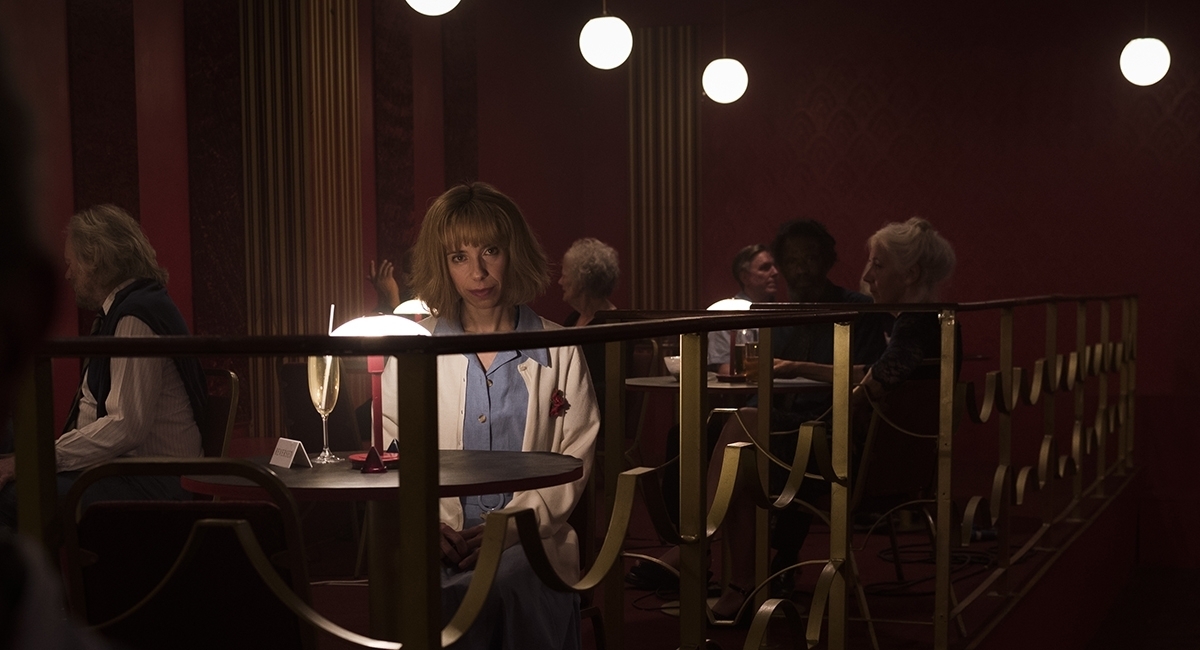
Sally Hawkins as Judy in a scene from director Craig Roberts’ 35mm film "Eternal Beauty." Cinematography by Kit Fraser.
He continues, “I used the 500T for all of interiors and studio work, which represents about 70% of the final film, with the 250D for the rest, which were chiefly day exteriors. The 500T has great latitude, and its range is amazing. When you have over-exposure in the highlights, film - especially the higher speed stocks – holds better than even the best digital formats. I could put windows at the peak of over-exposure, and not worry about having a clipped, ugly looking image that you’d get with digital. Film holds details better, not just in the highlights, but right across both ends of the spectrum. I went with the 250D for the daytime exteriors, and it matches the 500T so well … simple as that.”
Regarding his lighting strategy for the film, Fraser says, “As a general rule I mixed both Tungsten and LED sources and was especially keen on using ARRI Sky Panels, which allowed me to dial-in strong, bold colors to Craig’s liking, and to dynamically change these during shots to help illustrate June’s psychological states.”
As for stylized staging, organic camera movement and unusual points of view, Fraser and Roberts eschewed the temptation for close-ups and smooth classical camera moves, favoring wider mid-shots and the inclusion of natural lumps and bumps in any tracking shots from the dolly.
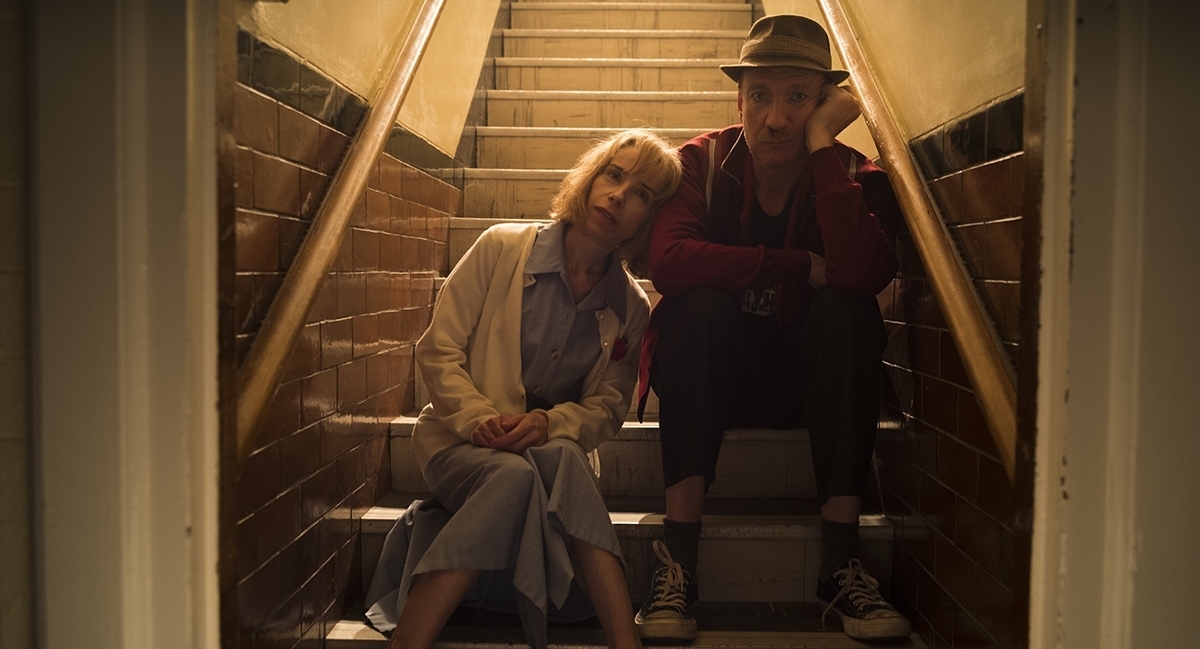
Sally Hawkins plays Judy, with David Thewlis as Mike, in director Craig Roberts’ 35mm film "Eternal Beauty." Cinematography by Kit Fraser.
The visualization of June’s schizophrenic episodes encompassed a wide range of framing and movement: macro photography of the action reflected in an eyeball; black spaces illuminated with a mass of candles; distorted lensing through thick glass bottles; and zippy camera moves with lighting changes inside June’s flat as she calms herself with medications.
Further to this, false walls and revolving sets enabled a number of theatrical scene transitions, helping the narrative to slip between important moments in June’s life. One such example sees the action transition from June alone on the sofa in her flat and transported into the ill-fated beauty pageant.
“Everyday Craig wanted to push the storytelling by trying something unconventional or crazy, which was creatively challenging and a lot of fun to develop,” Fraser concludes. “There’s no doubt that shooting Eternal Beauty on film gave the production it’s own special character. And even though I used the same equipment and image-processing techniques that I had used on Possum, it has a completely different look. Which all goes to demonstrate the enduring and unsurpassed capabilities of film for telling different sorts of stories.”